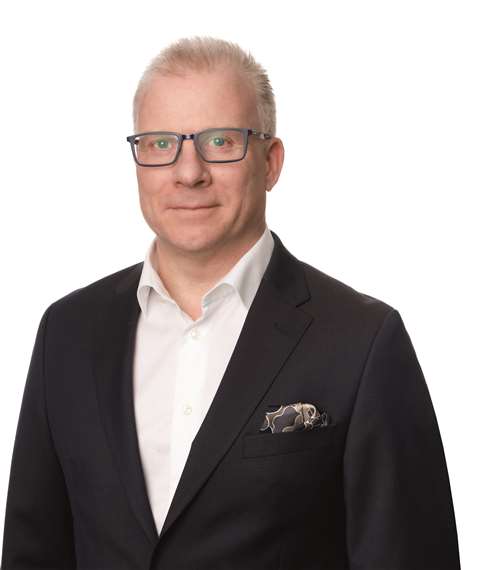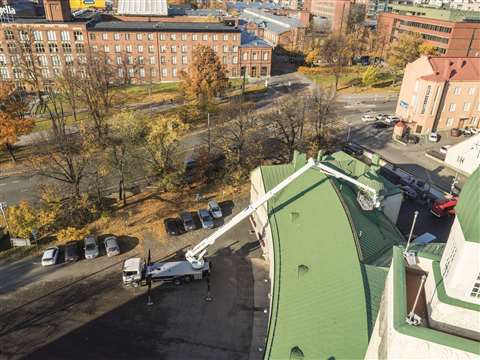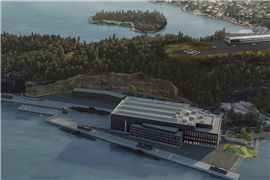Interview: Lasse Orre - Bronto Skylift's new CEO
14 April 2020
The new CEO at Bronto Skylift Lasse Orre, speaks with Euan Youdale about the changes underway at the company.
Bronto Skylift is going through some significant changes, with the appointment of a new CEO and plans to expand and re-organise its production footprint and processes.
The move into a leaner and production-focused future echoes moves by other longstanding manufacturers based in Europe and North America. Lasse Orre took over as CEO from Bronto Skylift’s previous managing director Harry Clayhills in December last year with that plan in mind. Orre has a long career in international business and has been at the helm of Finnish railway tram manufacturing company Transtech and railway component manufacturer Mitron, as CEO. The first mentioned company is the same size as Bronto, which has about €110 million turnover and 650 employees.

In his earlier career, Orre worked in the telecommunication and railway industries in Hong Kong, China and Switzerland. His experience in international production includes a stint in charge of four factories in China and India, employing 8,000 people producing mobile phones, DVD players and gaming consoles.
It was for this reason Orre believes he was headhunted for his new role. “I have almost 15 years’ experience of production from different regions and different products. And with my experience in sales, it’s a good mix.”
He also has a keen understanding of Japan, thanks to his previous work experience. In 2016, Bronto’s former owner Federal Signal Corporation, based in the US, sold the fire service and industrial truck mounted platform business to Morita Holdings Corporation, based in Japan.
Morita is Japan’s biggest producer of firefighting equipment. “I like the Japanese culture very much and appreciate the way they work. It’s important that your values are in line with your owners and in this case my personal values and the owner’s values are common.”
Orre declines to comment on Clayhill’s departure, although he points out that orders were up at the company and turnover and profit were the best they had been since 2000. Bronto also recognised, “the great contribution that Harry Clayhills made to our growth during his tenure.”
Orre continues, “Now we go into the execution phase for those high numbers. My colleagues are making a mid-term plan to 2025 - we have a target to increase our turnover around 30% in the coming years.”
To this end, One of Orre’s key missions at Bronto will be to change the production culture. “The supply chain and production is one of my targets now. Looking at my background, I have production experience in different countries and we have a lot of improvement to make in that area.My colleagues and I are interviewing some potential strategic partners; external companies who can help us update what we are doing.”
The company has two production facilities in the cities of Pori and Tampere, and a service and administration centre in Pirkkala, all in Finland. “From a logistics point of view, it is not an optimal situation.
“We will need to outsource some volume anyway as we don’t have enough space in our existing facilities. But I think we will be able to manage things as they are today before we make a decision about what we are going to do about capacity. To do that we have to know our core competency and understand what we need to focus.”
Product research

Ultimately, Orre is committed to finding long term production partners. “If you look at manufacturing costs in Finland compared to some other countries, there is quite a big gap. We need to find a way to be more competitive despite that. Finding new ways and partners is crucial,” He adds, “Our facilities are limited and it is not optimal that they are located 80km from each other.”
The strategy will follow in the next three to four months. And once Orre and his colleagues have devised it, the plan will be presented to the board. There has also been a move to establish synergies between Morita and Bronto. “We are doing more together in research and design. Of course, we have different kinds of products but in research and design we are finding more cooperation; step-by-step towards joint venture products.”
Two people from Morita are now living in Finland and working full time at Bronto. “We need to find out how we can find more opportunities in technical areas.”
One of Orre’s next steps is to visit Morita’s facilities in Japan, to fully understand its product portfolio. The access side of Bronto’s business makes up 30% to 40% of the total revenue, with firefighting equipment taking up the other seventy, or so, percent. Specifically on access, Orre comments, “We are willing to continue in that business segment. It is a question of how to expand the business?”
At the moment, the core concentration is on 40m working height equipment and above, although in 2018, Bronto launched its smallest model to date, the 35m working height S35EM. It was designed to be light and compact and easy to manoeuvre and operate. Transportation length is 9.5m, outreach is 29m and maximum basket load is 500kg.
This could be a sign of things to come at the company. “The question is, are we willing to work in another range: the 15m, 20m, 25m range as well? That is still open for thought and I am willing to discuss it with our customers to get a better market understanding in that area.” He adds, “Are we going to operate in only certain niche areas, or are we going to widen our product portfolio?”
If it does widen the portfolio, the acquisition of a company already manufacturing lower working height truck mounts may become a possibility. As Orre says, “To develop our own new range of products takes a lot of time; I am not even sure we are able to do that today.”
He adds, “We need to understand how big the business might be, and where our potential customers are. Prices are lower volumes are higher. Are we ready to go for that business? The answers should come in the next three to four months.”
At the moment, around 150 to 200 products come off the Bronto line each year. And while the access business is an area that Morita does not operate in, “They have agreed that we are able to operate in access because they can see so many synergies,” Orre adds.
But there is no doubt the two business areas are very different. “The access segment is very much a market driven business and that market goes up and down. The question is also about how capable we are in reacting to those changes in our production? The lead time is quite short for that type of product.” Nevertheless, Orre says the parent company is willing to grow in both areas of the business.
Across the company, the Middle East and China takes a relatively large share of sales, at around one third of turnover. “I have lived and worked in China for 10 years. I know that situation quite well and have seen the big change that has happened there, and it is still very much a growing market.”
For access equipment and truck mounts specifically, there is a great deal of potential. “Chinese people are expecting good delivery times, high quality products and they have been very happy about our products. So, we are in a strong position as far as the product range is concerned. We have to put a focus on having shorter lead times in production without compromising quality.”
Global goals
Nevertheless, competition in China is still high. “Competition is becoming tougher all the time. In China you do not know what rules you will have tomorrow; politics and rules can change very quickly and you cannot preempt that.”
He adds, “We have a very good partner in China at the moment that is helping us, but you never know if new rules will be implemented to support local manufacturers.”
Globally, service and maintenance are key considerations for Bronto Skylift and will be vitally important in the future. “Customers are increasingly calculating the lifetime cost of equipment. As part of this, we have to further expand the service network by ourselves or using partners.”
This will complement any new business segments that the group may expand into. “We have good global coverage at the moment but in the future we are going to have a wider business. It might be that we have a third or fourth business - there is a possibility the number of divisions will increase from those current two.”






